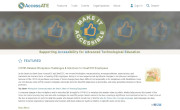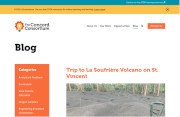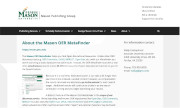
AccessATE: Making Community College Technician Education More Accessible for Everyone
accessate.net
AccessATE supports the work of the NSF-funded Advanced Technological Education (ATE) projects and centers in making the materials and activities they develop more accessible for all students and faculty, including those with disabilities. The project aims to increase awareness and understanding of accessibility requirements and provide guidance, tools, and support that offers solutions and helps achieve compliance with accessibility standards. Research shows that including Universal Design concepts and accessibility standards makes learning resources more usable by those with disabilities and others, including non-native language speakers, low-literacy students, and seniors. Including Universal Design concepts at the beginning of the development process can increase the effectiveness of websites, curriculum, documents, and other resources. The Advanced Technological Education (ATE) program supports projects and centers that develop curricular materials, professional development materials, summer camps, and other resources for educating the skilled technical workforce. ATE Central archives materials developed by the ATE community and provides an open digital portal for finding and downloading these resources. Having well-designed, accessible resources in the ATE Central archive will enable those who adapt and adopt these materials to reach the broadest possible audience thus broadening the reach of STEM education and opportunities for STEM employment.







